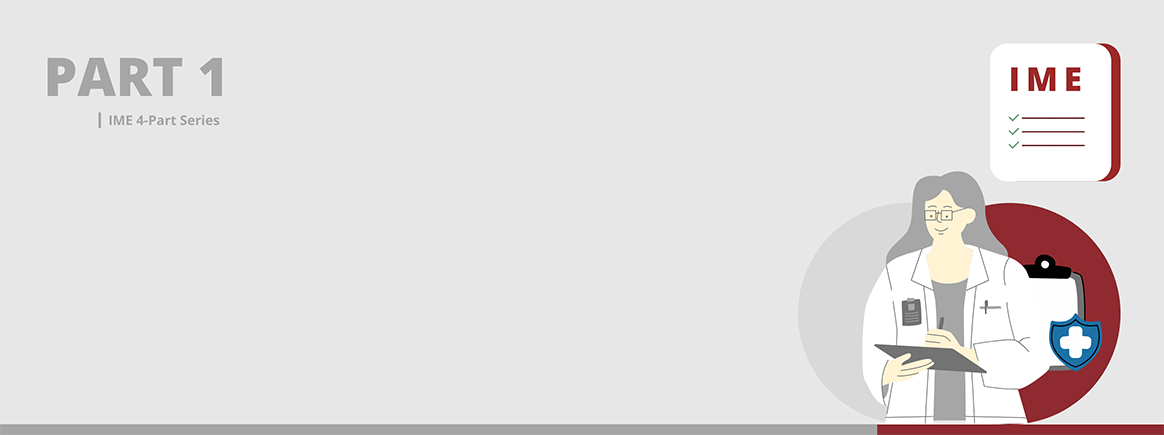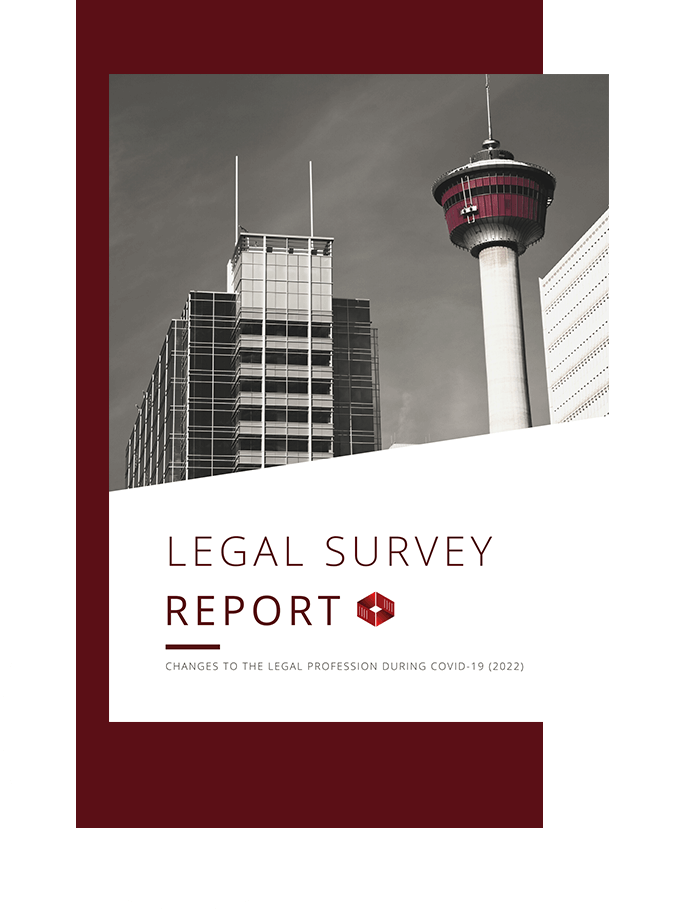
3 Steps to a Smooth IME
Introduction
In a previous role, I worked for nearly five years in business development for a large national IME referral clinic. During my years there, I saw the IME process from start to finish from both the law firm and the assessor sides of the transaction, and encountered a few common mistakes that led to wasted time and poor file outcomes.
An IME is one of the most important events in the life of a file. Over the next few weeks, I will be offering suggestions as to how to get the most out of this critical aspect of your case. This week, how to set and prepare for an IME after you have assessed your file's needs.
Step #1
Plan Your IME Well in Advance
It is crucial that you get out ahead of this. Booking an IME on short notice can result in a forced selection, which invites the chance of a poor outcome. If you are after a specific doctor, booking six to nine months ahead is recommended (note that some more popular specialists book over a year and a half in advance). If you are using an IME referral clinic with a roster of options (AssessMed, Viewpoint, IMA Solutions, etc.), contact them at least three to six months ahead of your preferred date. Any good business development or account manager at an IME clinic will be able to provide you with a few options immediately if your inquiry is early enough. These options will often include a doctor new to IME reporting, which can be advantageous due to greater availability, lower cost, and (often) more time spent with your client. While it may seem like a risk, consider that a new doctor on an IME referral clinic's roster is often one of the best in their field, otherwise the clinic would not have invested time and money bringing them on board and up-to-date with your province's civil code on reporting.
Step #2
Diarize Important Deadlines
Your firm will likely already have a calendaring system for file events like IMEs. Consider amending it by applying these tips:
-
Incorporate Reminders
Plan for an IME right from the start by automatically entering a “Book IME(s)” file event in your calendar when the file is opened. This will remind you to book early, but will also give your support staff a goal-date to have all medical records collected. The date should be set a year in advance of your preferred time during the lifecycle of a file for an IME to take place (it can be pushed back if necessary). -
Tactically Manage Reporting Deadlines
When communicating the reporting deadline to the IME referral clinic or the doctor, never provide them with the actual service deadline of the report. Doctors can often become overwhelmed with unexpected emergencies in their practice, or a number of IME reports becoming due at once. If your service deadline is anywhere near the examination date, always provide the assessor with a reporting deadline of at least two weeks in advance of that date, preferably one month. This will save you (and the doctor) a significant amount of grief if the provided deadline is missed. The only time the actual service deadline should be communicated is if the IME is an emergency and booked on short notice, and even then you should indicate the deadline being at least one day before service is required. -
Clarify and Track the Cancellation Policy
Once the IME is booked, double check the doctor's cancellation policy. Diarize the cancellation deadline with warning events at one month, two weeks, one week, one day, and day of. Include the cancellation fee in every event. If there is any chance of the file settling just after the cancellation deadline, communicate this with the referral clinic or doctor immediately. A little leeway can often be obtained in special circumstances, but only with notice prior to the deadline. -
Deliver the Records Early
Ask the expert how far in advance they require the relevant medical records. Always count two weeks up from this date for your deadline to provide the records. A little industry secret: Doctors will usually work on the files as they come in, and write their reports in that order after the examination. There is a good chance that your report will be one of the first delivered if you provide the records early.
Step #3
Delivering the Medical Records
You may feel that most doctors prefer paper copies of records delivered in a binder. A small number of doctors do prefer paper and cannot be convinced otherwise. The majority do not and actually consider a physical IME binder cumbersome and lacking in security. However, many insist on a physical binder because electronic delivery of documents is typically disorganized, can contain proprietary or corrupted file types, and can require sign-up or admin work on their end. There is a solution to this, and even doctors who insist on paper have changed their minds and accepted electronic delivery if the above objections are overcome.
Paper IME binders are a very poor delivery method when compared to the alternative:
- They are not encrypted or secure. Anyone with access to the binder has access to your client's entire medical history.
- Delivery is not instantaneous, which can be a problem if the IME is urgent, or if you want your file to be at the top of the list.
- Binders are extremely expensive to assemble, both in time and resources.
- Delivery is expensive because they should always be sent by courier.
Instead, look for an electronic, paperless, method that includes the following:
- Supports the tabbing and organization of the entire medical brief.
- Does not require delivery of a physical device (CD, USB, etc.) which costs time and money and may not be compatible with the assessor's system.
- Tracks if and when the recipient has downloaded the file.
- Does not make any changes to the size of the file or file type (this is the most common cause of file corruption).
- Makes it very easy for the recipient to download the records without being forced to sign up for a service or jump through any hoops.
- Is secured and encrypted end-to-end.
- Is cost-recoverable. Preparing an electronic binder still incurs an expense in non-revenue producing staff time, even if it is faster in comparison to preparing a physical binder. Your firm should always be capturing and recovering this cost.
Sending your IME binders electronically is the single greatest upgrade most firms can make, saving hours on every single file and securing your clients' privacy. When done properly, it is also deeply appreciated by most assessors. Firms are wasting massive amounts of time, money, and material preparing physical IME binders, or using inefficient and unsecured electronic methods.
Aim to send fewer than 10% of your IME binders in physical form, and your office will see a considerable improvement in document handling related to IMEs.
Add that to my other tips and, if you've done all the above, you should be lined up for a very smooth IME.
Tracument can help your office prepare for IMEs:
- Our Request Automater significantly reduces the time it takes to bring records into your office, and saves you staff time while doing so.
- Our Secure Send service allows you to securely and instantaneously deliver your entire medical file in an easy-to-use electronic format to any IME practitioner. The recipient does not need a Tracument account, and the documents can be tabbed, organized, and electronically bindered for their benefit.
Visit our features page for more information, and feel free to contact us to schedule a brief call.
You may also like
Happy Holidays Message from David Swadden, CEO
December 18, 2025
We would like to wish all our clients and readers a wonderful holiday season filled with joy and laughter.
Tracument Holiday Schedule
December 11, 2025
We would like to update all our clients of our Holiday Schedule this holiday season!
Tracument Wrapped!
December 4, 2025
What 2025 Looked like for Tracument and for you!




